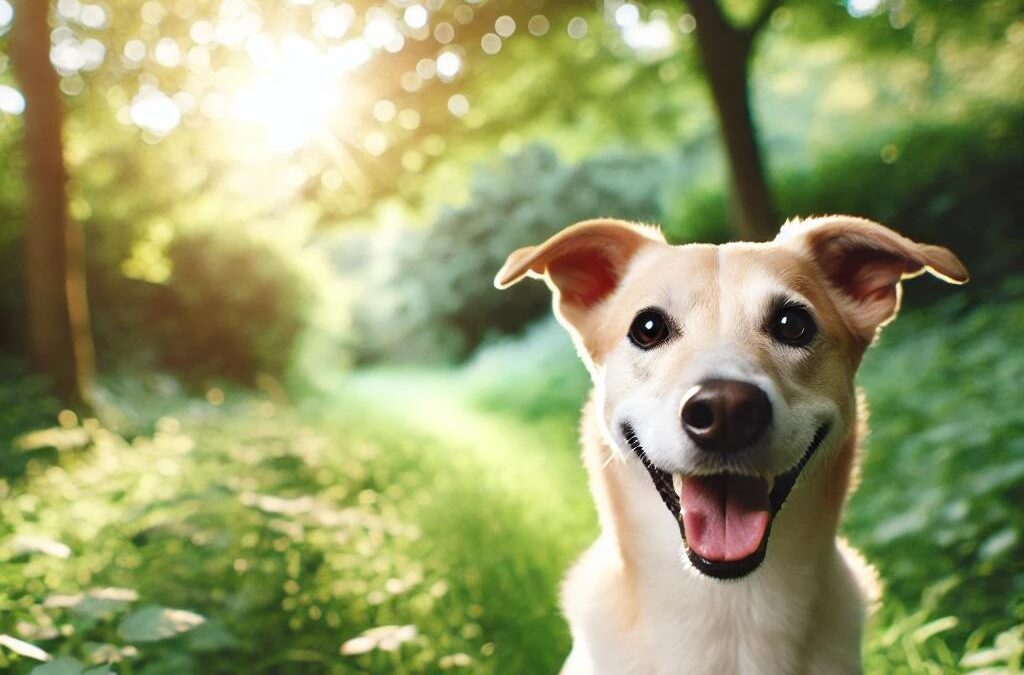
執筆者 TCMVET | 2024年10月10日 | 犬の癌と腫瘍
脊椎腫瘍は犬にとって深刻ですが稀な健康問題であり、著しい不快感や運動障害を引き起こす可能性があります。これらの腫瘍の性質、症状、利用可能な診断方法を理解することは、ペットの飼い主にとって不可欠です。このガイドは、犬の脊椎腫瘍の概要と、犬が影響を受けている可能性があると疑われる場合にできることを説明することを目的としています。
脊椎腫瘍とは何ですか?
脊髄腫瘍はさまざまな形で発生する可能性があり、脊髄自体から発生する場合もあれば、周囲の骨で発生する場合もあります。これらの腫瘍は神経組織、骨、または軟骨から発生する場合があり、原発性腫瘍 (脊髄から発生する) または二次性腫瘍 (体の他の部位から広がる転移性腫瘍) に分類できます。まれではありますが、これらの腫瘍は犬の生活の質に大きな影響を与える可能性があります。
症状を認識する
犬の脊椎腫瘍の症状は、椎間板疾患 (IVDD) などの他の脊椎疾患の症状と重なることがよくあります。注意すべき一般的な兆候には次のようなものがあります。
- 持続的な痛み犬は、泣き声や悲鳴を上げたり、動いたり遊んだりするのを嫌がるなど、痛みの兆候を示すことがあります。
- 衰弱または麻痺歩く、ジャンプする、立ち上がるといった動作が困難な場合は、手足の筋力低下が考えられます。
- 協調運動能力の喪失: 犬はふらついたり、バランスを保つのが困難になったりする兆候を示すことがあります。
- 行動の変化: イライラや無気力の増加、または通常の活動からの離脱は、不快感の兆候である可能性があります。
診断: 脊椎腫瘍はどのように検出されるのでしょうか?
脊髄腫瘍の症状は IVDD やその他の脊髄疾患の症状と似ているため、診断には高度な画像技術が必要です。獣医師は次のような診断方法を採用することがあります。
- X線検査X 線検査では骨の構造を詳しく調べることができますが、軟部組織の腫瘍は明らかにならない場合があります。
- MRI(磁気共鳴画像)MRI は脊椎腫瘍を視覚化する最も効果的な方法であり、骨と軟部組織の両方の詳細な画像を提供します。
- CTスキャン: コンピュータ断層撮影 (CT) スキャンは、脊椎に影響を及ぼす腫瘍の評価にも役立ちます。
正確な診断には獣医専門医による総合的な評価が必要になる場合があります。
脊髄腫瘍の治療法
脊椎腫瘍の治療計画は、腫瘍の種類、場所、重症度など、さまざまな要因によって異なります。考えられる治療オプションは次のとおりです。
- 外科的除去腫瘍が手術可能な場合、手術が症状緩和のための最善の選択肢となる可能性があります。
- 放射線治療この治療は腫瘍を縮小させ、脊髄への圧力を軽減するのに役立ちます。
- 化学療法特定の種類の腫瘍の場合、腫瘍の増殖と拡散を抑制するために化学療法が推奨される場合があります。
犬の脊椎腫瘍について理解することは、ペットの飼い主にとって非常に重要です。症状を早期に認識し、獣医による迅速な治療を求めることで、結果を大幅に改善することができます。犬の不快感や行動の変化の兆候に気付いた場合は、獣医に相談して、徹底的な評価と適切な治療オプションを受けてください。情報を入手し、積極的に行動することで、犬の健康と幸福に大きな違いをもたらすことができます。

執筆者 TCMVET | 2024年10月9日 | 犬の癌と腫瘍
獣医腫瘍学は進化しており、多くのペットの飼い主が従来の癌治療を補完するより総合的なアプローチを求めています。総合的なケアはペットの全体的な健康に焦点を当て、自然療法とライフスタイルの調整を取り入れて、身体的および精神的健康の両方を高めます。栄養、漢方薬、ストレス管理、鍼治療やマッサージなどの補完療法を統合することにより、総合的な獣医ケアは癌治療を受けているペットに支援的な環境を提供します。この記事では、獣医腫瘍学における総合的なアプローチの重要な要素と、ペットの癌治療をサポートするためにそれらをどのように使用できるかについて説明します。
ペットの癌治療におけるホリスティックケアの役割
ホリスティック ケアは全身的なアプローチを採用し、免疫システムをサポートし、炎症を軽減し、がん治療の副作用を管理することで、ペットの生活の質を向上させることを目指します。ホリスティック ケアでは、病気だけに焦点を当てるのではなく、ペットの身体的、感情的、精神的な健康を考慮します。最終的な目標は、ペットの自然な防御力を強化し、生活の質を向上させ、従来のがん治療の効果を高めることです。
ホリスティックペット癌ケアの重要な要素
- 栄養と食事栄養は、特にがん治療中はペットの全体的な健康を維持する上で重要な役割を果たします。健康的でバランスの取れた食事は、免疫システムを強化し、エネルギーレベルを高め、回復を早めます。がんを患っているペットの場合、特定の食事調整により腫瘍の成長を遅らせ、体の治癒プロセスをサポートすることができます。
- 高品質のタンパク質: タンパク質は組織の再構築と免疫機能のサポートに不可欠です。赤身の肉や魚などの高品質の動物性タンパク質は、がんを患っているペットに最適です。
- 抗炎症食品: ターメリック、魚油(オメガ3脂肪酸が豊富)、葉物野菜などの成分は、がんやその治療に伴って起こる炎症を軽減するのに役立ちます。
- 低炭水化物ダイエットがん細胞はブドウ糖を栄養源とするため、ペットの食事中の炭水化物を制限すると腫瘍の成長を遅らせることができます。
- 免疫力をサポートする漢方薬ハーブ療法は、免疫システムを強化し、がんなどの病気と闘うために何世紀にもわたって使用されてきました。多くのホリスティック獣医師は、がんを患うペットをサポートするために、ハーブ療法を治療計画に取り入れています。
- アストラガルスこのハーブは免疫力を高める特性があることで知られており、体内でより多くの白血球が生成されて感染症と闘い、腫瘍の成長を遅らせる可能性があります。
- 薬用キノコ:キノコ類 ターキーテール, 霊芝そして 椎茸 ベータグルカンが豊富に含まれており、免疫機能を高め、抗がん効果をもたらします。
- ミルクシスル: 肝機能をサポートするために一般的に使用されるミルクシスルは、体内の毒素を除去し、がん治療による有害な影響から健康な細胞を保護するのに役立ちます。
- 鍼治療と痛みの管理鍼治療は、体の特定のポイントを刺激してエネルギーのバランスを取り、健康を改善する古代の治療法です。獣医腫瘍学では、鍼治療は痛みの管理、消化の改善、食欲増進、炎症の軽減によく使用されます。
- 痛みを和らげる鍼治療: がんを患うペットは、腫瘍や化学療法などの治療により、不快感を感じることがよくあります。鍼治療は痛みを和らげ、リラックス効果を促進し、ペットの生活の質を向上させることができます。
- 総合的な痛みの管理: 鍼治療に加えて、マッサージや CBDオイル 従来の鎮痛剤のような副作用がなく、痛みや不安を軽減できることから人気が高まっています。
- ストレス軽減と感情サポートがんを患っているペットは、高いレベルのストレスを感じる可能性があり、免疫系が弱まり、全体的な健康に影響を及ぼす可能性があります。ストレスを管理し、精神的サポートを提供することは、がん治療中のペットの健康維持に不可欠です。
- 心を落ち着かせるルーチン定期的な食事、散歩、遊びの時間など、一貫した毎日の習慣を維持することは、がんを患ったペットの不安を軽減するのに役立ちます。
- アロマテラピーとエッセンシャルオイルラベンダーやカモミールなどの安全なエッセンシャルオイルは、ディフューザーや優しいマッサージに使用することで、リラックス効果を高め、ストレスを和らげることができます。
- レイキとエネルギーヒーリング: レイキは、エネルギーヒーリングを使用してストレスを軽減し、感情のバランスを促進する非侵襲的な療法です。多くのホリスティック獣医師は、包括的な癌治療計画の一環としてレイキを提供しています。
- 水分補給と解毒適切な水分補給は、がん治療を受けているペットにとって非常に重要です。体内の毒素を排出し、腎臓と肝臓の機能をサポートするからです。ペットが新鮮な水を飲めるようにし、ボーンブロスなどの水分を豊富に含む食品を与えると、ペットのエネルギーレベルを維持し、解毒を促進できます。
- 身体活動と運動がん治療によりペットが無気力になることはありますが、適度な運動は筋肉の緊張を維持し、血行を改善し、気分を高めるために不可欠です。ゆっくり散歩したり遊んだりすることで、ペットの活動性を維持し、全体的な健康状態を改善できます。
- 理学療法: カスタマイズされた理学療法エクササイズは、運動障害のあるペットが無理をせずに活動的であり続け、より早い回復を促進します。
ホリスティック治療と従来の治療を統合することの利点
ホリスティックケアには多くの利点がありますが、従来の癌治療に代わるものではなく、補完するものでなければなりません。外科手術、化学療法、放射線療法は、特に進行性の癌の場合、獣医腫瘍学において不可欠な手段です。これらの治療をホリスティックなアプローチと組み合わせることで、ペットの飼い主はペットの全体的な健康を向上させ、治療の副作用を軽減し、長期的な健康を促進することができます。
獣医腫瘍学におけるホリスティックなアプローチは、がん治療を受けているペットに貴重なサポートを提供します。栄養、漢方薬、鍼治療、ストレス軽減、身体活動に重点を置くことで、ホリスティックケアはペットの快適さを高め、免疫力を高め、生活の質を向上させます。これらの自然療法を従来の獣医腫瘍学治療と統合することで、がんとペットの全体的な健康の両方に対処する包括的でバランスの取れたアプローチが実現します。この組み合わせにより、ペットの飼い主はペットに可能な限り最高のケアを提供でき、回復の可能性と生活の質が向上します。

執筆者 TCMVET | 2024年10月9日 | 犬の癌と腫瘍
肥満細胞腫(MCT)は、犬に最もよく見られる皮膚腫瘍の 1 つで、比較的良性の腫瘍から非常に悪性の腫瘍までさまざまです。肥満細胞腫を患う犬の病状を管理し、生活の質を向上させる上で重要な要素は、免疫システムを強化することです。免疫システムが強ければ、体はより効果的に癌細胞と闘うことができ、治療中の犬の全体的な健康をサポートします。この記事では、犬の免疫力を高め、MCT を患う犬の転帰を改善するのに役立つさまざまな自然療法とケアのヒントを紹介します。
犬の肥満細胞腫を理解する
肥満細胞腫は、犬の免疫システムの一部であり、アレルギー反応に関与する肥満細胞から発生します。これらの腫瘍は、皮膚や内臓にしこりとして現れることがあり、その動きは予測できない場合があります。標準的な治療には、手術、放射線療法、化学療法が含まれることが多いですが、免疫システムを自然にサポートすることも、MCT と戦う犬にとって同様に重要な役割を果たす可能性があります。
MCT で犬の免疫力を強化するベストな方法
- 免疫力を高める食事強力な免疫システムの基礎は適切な栄養です。抗酸化物質、必須脂肪酸、栄養素が豊富なバランスの取れた食事は、肥満細胞腫を患う犬の免疫システムを強化するために不可欠です。
- 高品質のタンパク質赤身の肉や魚は健康な免疫システムの構成要素となり、体の組織を修復し、がん細胞と戦うのに役立ちます。
- 抗酸化物質が豊富な食品ほうれん草、ニンジン、ブルーベリー、ブロッコリーなどの食材は、腫瘍の成長に寄与する可能性のあるフリーラジカルを中和し、酸化ストレスを軽減するのに役立ちます。
- オメガ3脂肪酸: 魚油や亜麻仁に含まれるオメガ 3 には抗炎症作用があり、免疫反応の調整に役立ちます。また、皮膚腫瘍のある犬にとって重要な皮膚の健康もサポートします。
- 免疫力をサポートする天然サプリメントサプリメントは、特にがん治療を目的とした場合、免疫システムをさらに強化することができます。肥満細胞腫を患う犬に最適な天然サプリメントには、次のようなものがあります。
- 薬用キノコ:キノコ類 ターキーテール, 霊芝そして 椎茸 免疫力を高め、抗がん作用があることで知られています。これらのキノコは免疫細胞を刺激し、体ががん細胞を認識して戦うのを助けます。
- クルクミン: ウコン由来のクルクミンは、強力な抗酸化物質および抗炎症物質であり、腫瘍の成長を抑え、免疫システムをサポートします。
- プロバイオティクス: 健康な腸は強力な免疫システムに不可欠です。プロバイオティクスはバランスの取れた微生物叢を維持するのに役立ち、免疫機能の向上に直接つながります。
- 免疫力を高める運動適度な運動を定期的に行うことは、犬の免疫システムを改善するシンプルかつ効果的な方法です。運動は血行を刺激し、免疫細胞が体中をより効率的に巡るのを助けます。毎日の短い散歩、遊び、インタラクティブな活動は、犬の身体を健康に保ち、精神的に活発に活動するのに役立ちます。
- ストレス軽減ストレスは犬の免疫システムを弱め、肥満細胞腫などの健康状態を悪化させる可能性があります。ストレスを軽減し、リラックスを促すことは、免疫力を高めるために重要です。
- 日常と安定定期的な食事、散歩、遊びなどの一貫したルーチンを維持することは、癌に罹患した犬の不安を軽減するのに役立ちます。
- 鎮静サプリメント: 天然の鎮静剤 L-テアニン, バレリアン根そして CBDオイル ストレスレベルを下げ、リラックスを促進し、免疫機能を高めるのに役立ちます。
- マッサージ療法: 優しいマッサージは、犬をリラックスさせ、血行を良くし、ストレスを軽減するのに役立ちます。また、ペットとの絆を深め、快適さと感情的なサポートを提供する方法でもあります。
- 免疫の健康のためのハーブ療法ハーブ療法は健康と免疫力をサポートするために何世紀にもわたり使用されてきました。特定のハーブは、免疫系を刺激する自然な方法を提供し、癌に罹った犬に特に効果的です。
- アストラガルス免疫力を高める作用があることで知られる黄耆は、感染症やガンと闘うために重要な白血球の生成を促進します。
- エキナセアこのハーブは免疫系を刺激し、体が感染症と戦うのを助けます。これは、癌治療を受けている犬にとって特に有益です。
- ミルクシスル: 肝機能をサポートするためによく使用されるミルクシスルは、体内の毒素を排出し、細胞を保護し、免疫系を弱める毒素の排除を助けます。
- ホリスティックセラピー食事療法やサプリメントに加え、ホリスティック療法は肥満細胞腫を患う犬の免疫機能を改善する上で重要な役割を果たします。これらの療法を犬のケアプランに組み込むことで、犬の全体的な健康をさらにサポートすることができます。
- 鍼治療: 鍼治療は獣医治療において、痛みを軽減し、エネルギーの流れを高め、免疫システムをサポートするために使用されます。また、化学療法などの従来の治療による症状の緩和にも役立つため、癌にかかっている犬には特に有効です。
- レイキ: レイキは、ストレスを軽減し、リラックスを促し、体の自己治癒を助けるエネルギー療法です。多くのホリスティック獣医師は、癌に罹った犬に対する総合的なケアの一環としてレイキを提供しています。
- 十分な水分補給水分補給は見落とされがちですが、健康な免疫システムを維持するためには不可欠です。愛犬がいつでも清潔で新鮮な水を飲めるようにし、骨スープなどの水分を豊富に含む食品を食事に加えることを検討してください。適切な水分補給は体内の毒素を排出し、免疫システムを最適に機能させるのに役立ちます。
免疫サポートと従来の治療の統合
犬の免疫システムの強化は、従来の癌治療に代わるものではなく、補完するものでなければなりません。肥満細胞腫を管理するには、手術、化学療法、放射線療法が必要になることがよくありますが、免疫力を高めることで治療結果を高めることができます。多くの統合獣医師は、免疫力を高める戦略を使用して回復と生活の質を改善し、より積極的な治療で癌細胞を標的とする複合的なアプローチを推奨しています。
肥満細胞腫を患う犬の免疫力を高めることは、全体的なケアの重要な部分です。栄養豊富な食事、天然サプリメント、ストレス管理、ホリスティック療法に重点を置くことで、犬の免疫システムをサポートし、回復力と生活の質を向上させることができます。これらの自然な方法と従来の癌治療を組み合わせることで、肥満細胞腫の管理に対するバランスの取れたアプローチが確保され、犬が内側から癌と闘うのに役立ちます。

執筆者 TCMVET | 2024年10月9日 | 犬の癌と腫瘍
犬の皮膚がんは、犬に見られる腫瘍の中で最も一般的なタイプの 1 つです。獣医学の進歩により、この病気の治療に新たな展望が開かれました。早期診断と、従来の医学と代替アプローチの両方を統合した革新的な治療法により、罹患したペットの転帰を大幅に改善することができます。この記事では、犬の皮膚がんの管理に効果的な最新の治療法と従来の方法を検討し、ペットの飼い主に包括的な治療オプションに関する貴重な情報を提供します。
犬の皮膚がんについて理解する
犬に発生する可能性のある皮膚がんには、肥満細胞腫、黒色腫、扁平上皮癌など、いくつかの種類があります。皮膚がんには良性のものもありますが、悪性で体の他の部位に転移するものもあります。定期的な皮膚検査、生検、診断画像による早期発見は、治療の成功率を高めるために重要です。
現代の治療オプション
- 手術
犬の皮膚がんの治療では、手術が第一線の治療となることがよくあります。早期に発見されれば、特に局所的な場合は、腫瘍の外科的切除が非常に効果的です。ただし、進行した段階では、転移したがん細胞を標的にするために、手術を放射線療法や化学療法などの他の治療と組み合わせることがあります。
- 化学療法と放射線療法
化学療法は、手術後に残っている可能性のある癌細胞や他の臓器に転移した癌細胞を標的とするのに有効です。一方、放射線療法は、敏感な部位の近くにあるなど、手術で除去するのが難しい腫瘍に対する選択肢です。
- 免疫療法
免疫療法は、犬の免疫システムを利用して癌細胞と戦うことで、犬の皮膚癌の治療に大きな期待が寄せられています。黒色腫などの特定の癌種を標的とするモノクローナル抗体と癌ワクチンの研究が進められています。
治療に伝統中国医学(TCM)を取り入れる
近年、犬の皮膚がんを管理するための補完療法として、伝統的な中国医学 (TCM) に目を向けるペットの飼い主や獣医師が増えています。TCM は、体のエネルギーのバランスを整え、免疫機能を高め、全体的な生活の質を向上させることに重点を置いています。
- 漢方薬
漢方薬など シャコバノキ (Ligusticum wallichii)と スクロフラリア (イチジク草) は、血液循環を促進し、炎症を軽減し、腫瘍の成長を防ぐ能力があることが研究されています。これらのハーブは、犬の癌関連症状を緩和し、免疫反応を高めるように設計された処方によく含まれています。
- 鍼治療
鍼治療は、がんを患った犬の痛みや炎症を軽減する効果があることが証明されているもう 1 つの TCM 治療です。また、食欲やエネルギー レベルも改善できるため、化学療法などの従来のがん治療を受けているペットにとって、補助療法として有効です。
- 食事と栄養
栄養療法は癌の管理において重要な役割を果たします。オメガ 3 脂肪酸、ウコン、霊芝などの特定の薬用キノコなどの抗炎症食品を犬の食事に取り入れることで、免疫システムを強化し、癌の増殖と戦うことができます。
犬の皮膚がん治療の未来
継続的な研究と統合医療への関心の高まりにより、犬の皮膚がん治療の将来は有望に見えます。手術、放射線療法、化学療法などの従来の治療法と、中医学や栄養学などの補完療法を組み合わせることで、病気を管理する総合的なアプローチが実現します。この統合ケアは、腫瘍の成長を抑えるだけでなく、犬の全体的な健康状態を向上させ、寿命を延ばす可能性もあります。
犬の皮膚がんは世界中で多くの犬に影響を与え続けていますが、現代医学の進歩と伝統的な治療法を融合させた革新的な治療戦略は、ペットの飼い主に包括的な解決策を提供します。定期的な獣医の診察、早期発見、手術、免疫療法、中医学を含む個別のケアプランにより、病気を効果的に管理できる可能性が大幅に高まります。愛犬に可能な限り最高のケアを提供したいペットの飼い主にとって、皮膚がん治療のこれらの新しい地平を探ることは、愛犬のより健康な未来に向けた重要なステップです。

執筆者 TCMVET | 2024年10月8日 | 犬の癌と腫瘍
扁平上皮癌 (SCC) は、特に皮膚が薄い、毛が薄い、または色素が欠乏している犬に発症する皮膚癌の一種です。日光、特に有害な紫外線 (UV) への曝露は、犬の SCC 発症の大きな要因です。この記事では、UV 放射線が色素が薄い犬にどのような影響を与えるか、SCC がどのように発症するか、そしてこの深刻な皮膚疾患からペットを守るにはどうすればよいかについて説明します。
犬の扁平上皮癌とは何ですか?
扁平上皮癌は、皮膚や粘膜の扁平上皮細胞から発生する悪性腫瘍です。このタイプの癌は、日光への曝露と関係していることが多く、日光は皮膚細胞の DNA を損傷し、癌性増殖の形成につながります。扁平上皮癌は、鼻、腹部、耳など、毛皮にほとんど覆われていない、またはまったく覆われていない部位に主に発生します。体の他の部位に広がる可能性は低いですが、局所的に浸潤し、近くの組織に重大な損傷を引き起こす可能性があります。
色素の薄い犬に対する紫外線の影響
毛の色が薄い、毛が薄い、または色素が欠乏している犬(アルビノ犬など)は、紫外線の影響を特に受けやすいです。色素は、有害な紫外線を吸収して反射する天然の保護バリアとして機能します。しかし、色素がほとんどない犬では、この保護が大幅に低下し、紫外線が皮膚の奥深くまで浸透して細胞を損傷し、扁平上皮がんのリスクが高まります。
- 危険にさらされている品種
特定の犬種は、色素が薄く毛がないため、SCC にかかりやすいです。ブル テリア、ダルメシアン、ボクサー、ビーグルなどの犬種は、毛の少ない部分で SCC を発症する傾向があります。チャイニーズ クレステッド ドッグのような毛のない犬種も、皮膚が露出しているためリスクが高くなります。
- 影響を受ける一般的な領域
扁平上皮癌は、通常、日光にさらされることが多い体の部位に発生します。耳、鼻、まぶた、腹部などの部位が含まれます。特に日光が強い地域で屋外でかなりの時間を過ごす犬は、これらの部位に扁平上皮癌が発生するリスクが高くなります。
日光曝露が扁平上皮がんを引き起こす仕組み
紫外線(UV)に長時間さらされると、犬は扁平上皮癌になることがあります。UV は皮膚細胞の DNA にダメージを与え、突然変異を引き起こして異常な細胞増殖を引き起こします。時間が経つにつれて、このダメージが蓄積し、癌性腫瘍の発生につながる可能性があります。色素の薄い犬は、色素の濃い犬が持つ自然な UV 保護がないため、より影響を受けやすくなります。
Preventing Squamous Cell Carcinoma in Dogs
- Limit Sun Exposure
犬が直射日光にさらされる時間を減らすことは、SCC を予防する最も効果的な方法の 1 つです。紫外線が最も強い、通常は午前 10 時から午後 4 時までの太陽が照りつける時間帯には、犬を屋内に留めておいてください。犬が屋外で過ごすのが好きな場合は、日陰のある場所にアクセスできるようにし、長時間の日光への露出を避けてください。
- 犬に安全な日焼け止めを使用する
皮膚が白かったり、毛が薄い犬の場合、露出部分に犬に安全な日焼け止めを塗ると、有害な紫外線から犬を守るのに役立ちます。鼻、耳、腹部など、日焼けしやすい部分に重点を置きます。人間用の日焼け止めには犬にとって有毒な成分が含まれていることがあるため、ペット用に特別に作られた日焼け止めを選ぶようにしてください。
- 防護服
犬用の紫外線カット服を購入すると、さらに保護効果を高めることができます。犬用に設計された軽量で通気性のあるシャツ、帽子、バイザーは、敏感な部分を直射日光から保護します。これらの保護服は、色素欠乏症の犬や、屋外で長時間過ごす犬に特に役立ちます。
- 定期的な皮膚チェック
扁平上皮癌の早期発見は、治療を成功させる鍵です。犬の皮膚にしこり、腫れ、治らない傷などの変化がないか定期的にチェックしてください。扁平上皮癌は、かさぶた状の赤い病変や、痛みを伴う潰瘍として現れることがよくあります。異常に気付いた場合は、できるだけ早く獣医に相談してください。
扁平上皮癌の治療法
- 手術
犬の扁平上皮癌の最も一般的な治療法は、腫瘍の外科的切除です。早期発見と明確な切除範囲での外科的切除により、癌が周囲の組織に広がるのを防ぐことができます。腫瘍の大きさと場所によっては、特に顔や口などの敏感な部分では、より複雑な手術が必要になる場合があります。
- 放射線治療
手術による完全な切除が不可能な場合には、放射線療法を用いて癌細胞を標的とし、腫瘍の増殖を抑えることができます。手術が困難な部位の腫瘍や、腫瘍が大きすぎて安全に切除できない場合には、放射線療法が推奨されることが多いです。
- 凍結療法
凍結療法は、異常な組織を凍結して破壊する技術で、小さな SCC 腫瘍の治療に使用できます。この治療法は、皮膚表面にある腫瘍に特に効果的です。これは、初期段階の SCC に推奨される、侵襲性の低い選択肢です。
栄養とサプリメントで健康全般をサポート
医療処置に加えて、栄養豊富な食事を与えることで、犬の全体的な健康と免疫システムをサポートできます。ブルーベリー、ほうれん草、ニンジンなどの抗酸化物質が豊富な食品は、酸化ストレスと戦い、皮膚の健康をサポートします。魚油に含まれるオメガ 3 脂肪酸は、炎症を軽減し、皮膚の健康を促進します。ウコンやミルクシスルなどのハーブサプリメントは、さらに抗炎症効果をもたらす可能性があります。
犬の扁平上皮癌の発症には、日光への曝露と色素欠乏が大きな役割を果たします。色素が薄い犬種や毛のない犬種は、このタイプの皮膚癌に特にかかりやすいです。日光への曝露を制限し、日焼け止めを使用し、保護服を着用することで、飼い主は犬の扁平上皮癌発症リスクを大幅に減らすことができます。早期発見と治療の成功には、定期的な皮膚検査と獣医による迅速な診察が不可欠です。適切な予防策を講じることで、紫外線の有害な影響から犬を守り、健康で癌のない生活を送ることができます。

執筆者 TCMVET | 2024年10月8日 | 犬の癌と腫瘍
線維肉腫は、ペット、特に犬や猫の線維性結合組織に影響を及ぼす癌の一種です。線維肉腫は悪性で侵襲性がありますが、早期診断と綿密に計画された治療戦略により、ペットの予後を大幅に改善することができます。手術、放射線療法、化学療法などの従来の治療に加えて、総合的なアプローチを採用することで、ペットの全体的な健康と生活の質を大幅に向上させることができます。この記事では、線維肉腫と診断されたペットの予後と長期治療の選択肢について、自然なケアとライフスタイルの変化に焦点を当てて説明します。
ペットの線維肉腫について理解する
線維肉腫は、皮膚、口、内臓など、体のさまざまな部位に発生する悪性腫瘍です。これらの腫瘍は急速に成長し、周囲の組織を侵す傾向があるため、手術による完全な除去は困難です。しかし、その悪性の性質にもかかわらず、線維肉腫は転移(他の臓器への拡散)することはほとんどないため、適切な管理を行えば良好な結果が得られる可能性が高くなります。
線維肉腫の予後
線維肉腫と診断されたペットの予後は、いくつかの要因によって異なります。
- 腫瘍の位置と大きさ
皮膚などのアクセスしやすい部位の腫瘍は、特に早期に発見され、外科的に切除された場合、予後が良好になる傾向があります。腫瘍が大きい場合や、口の中や重要な臓器の近くなどの難しい部位にある場合は、治療が難しく、予後がさらに不透明になる可能性があります。
- 腫瘍のグレード
低悪性度線維肉腫はゆっくりと増殖し、それほど悪性度が高くないため、急速に増殖して再発する可能性が高い高悪性度腫瘍に比べて予後が良好であることが多いです。
- 手術の成功と治療
手術中に腫瘍を切除する(周囲の健康な組織とともに腫瘍を切除する)ことは、再発のリスクを減らすために重要です。切除範囲をきれいにすることが難しい場合は、フォローアップ治療として放射線療法や化学療法が必要になることがあります。
ペットの線維肉腫の長期管理
- 外科的除去と術後ケア
線維肉腫の治療には、特に腫瘍が早期に発見された場合、手術が最も効果的な選択肢です。術後のケアには、再発の兆候がないかペットを注意深く観察し、適切に治癒していることを確認し、痛みを効果的に管理することが含まれます。残っている癌細胞を除去して再発を防ぐために、放射線療法や化学療法などの追加治療が必要になる場合もあります。
- 抗炎症性で栄養豊富な食事
免疫系をサポートするバランスの取れた食事は、線維肉腫の管理に重要な役割を果たします。魚油に含まれるオメガ 3 脂肪酸には抗炎症作用があり、腫瘍の炎症を軽減するのに役立ちます。抗酸化物質が豊富な葉野菜、ブルーベリー、ニンジンなどの食品も、酸化ストレスと戦い、ペットの全体的な健康を改善するのに役立ちます。癌細胞は糖分を糧に増殖するため、炭水化物が少なく、高品質のタンパク質を多く含む食事も、腫瘍の成長リスクを軽減するのに役立ちます。
- サポートのためのハーブサプリメント
伝統的な中国医学(TCM)などのホリスティックなアプローチは、線維肉腫の従来の治療法を補完することができます。 四川風ラベッジ (川芎)は血液循環を促進し、炎症を軽減するのに役立ちます。これは線維肉腫を患っているペットに有益です。 スクロフラリア (イチジク草) には抗炎症作用と解毒作用があり、腫瘍の成長を遅らせるのに役立つ可能性があります。ペットのケア計画にハーブを取り入れる前に、必ずホリスティック獣医師に相談して、ハーブが安全で効果的であることを確認してください。
- 疼痛管理と生活の質
線維肉腫の長期治療では、ペットの快適さを管理することが不可欠です。鎮痛薬、抗炎症薬、鍼治療やマッサージなどの代替療法は、不快感を軽減し、ペットの生活の質を向上させるのに役立ちます。CBD オイルは、がんに伴う痛みや不安を軽減するために、一部のペットに使用されていますが、獣医師の監督下で使用する必要があります。
- 運動と運動能力の維持
ペットの活動レベルは状態に応じて調整する必要がありますが、定期的な運動はペットの体力と運動能力を維持するために重要です。ゆっくり散歩したり遊んだりすることで、ペットに過度な負担をかけずに活動的に保つことができ、筋肉の減少を防ぎ、全体的な健康を維持するのに役立ちます。
- 定期的なモニタリングとフォローアップケア
線維肉腫は再発率が高いため、獣医師による定期的なフォローアップ診察が不可欠です。腫瘍の再増殖を確認するために、X 線、超音波、CT スキャンなどの定期的な画像検査が推奨される場合があります。再発を早期に検出することで、タイムリーな介入が可能になり、がんを効果的に管理できる可能性が高まります。
線維肉腫ケアへの総合的アプローチ
従来の癌治療とホリスティックケアを組み合わせることで、ペットの全体的な健康状態を改善できます。ホリスティックアプローチには、線維肉腫の身体的側面に対処するだけでなく、ペットの感情的および精神的健康を考慮することも含まれます。ストレスのない環境を提供し、天然サプリメントを提供し、獣医師とのオープンなコミュニケーションを維持することで、ペットが包括的なケアを受けられるようになります。
線維肉腫は悪性の癌ですが、早期診断、手術、フォローアップ治療、総合的なケアを組み合わせることで、病気を管理し、ペットの生活の質を向上させることができます。栄養豊富な食事、ハーブサプリメント、痛みの管理、定期的なモニタリングは、長期ケアに不可欠です。獣医師と緊密に協力し、総合的なアプローチを取り入れることで、線維肉腫との闘いにおいてペットに最善のサポートを提供できます。






